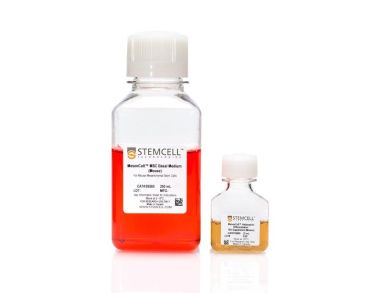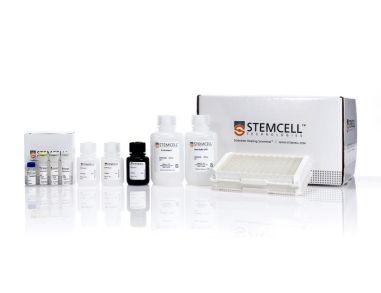搜索结果: 'methocult media formulations for mouse hematopoietic cells serum containing'
-
 小鼠IL-4酶联免疫吸附测定试剂盒 用于小鼠白细胞介素4的检测和分析
小鼠IL-4酶联免疫吸附测定试剂盒 用于小鼠白细胞介素4的检测和分析 -
 小鼠重组M-CSF(HEK293表达) 巨噬细胞集落刺激因子
小鼠重组M-CSF(HEK293表达) 巨噬细胞集落刺激因子 -
 MesenCult™ 扩增试剂盒 (小鼠) 用于培养小鼠MSCs和MEFs
MesenCult™ 扩增试剂盒 (小鼠) 用于培养小鼠MSCs和MEFs -
 重组小鼠IL-1 α 白介素1α
重组小鼠IL-1 α 白介素1α -
 HepatiCult™ 类器官生长培养基 (小鼠) 用于建立和维持小鼠肝祖类器官的培养基
HepatiCult™ 类器官生长培养基 (小鼠) 用于建立和维持小鼠肝祖类器官的培养基 -
 ImmunoCult™ 小鼠Th2分化添加剂 小鼠naïve CD4+ T细胞向Th2细胞分化的无血清培养补充
ImmunoCult™ 小鼠Th2分化添加剂 小鼠naïve CD4+ T细胞向Th2细胞分化的无血清培养补充 -
 MesenCult™ 脂肪分化试剂盒 (小鼠) 用于小鼠MSCs、ADSCs和MEFs体外向脂肪细胞的分化
MesenCult™ 脂肪分化试剂盒 (小鼠) 用于小鼠MSCs、ADSCs和MEFs体外向脂肪细胞的分化 -
 重组小鼠MIP-1 β (CCL4) 巨噬细胞炎性蛋白-1 β
重组小鼠MIP-1 β (CCL4) 巨噬细胞炎性蛋白-1 β -
 EasySep™小鼠ILC2富集试剂盒
EasySep™小鼠ILC2富集试剂盒对来源于小鼠肺组织或其他组织单细胞悬液的未标记 ILC2 细胞进行免疫磁珠负选分离
-
 小鼠ifn - γ酶联免疫吸附测定试剂盒 用于小鼠干扰素γ的检测和测定
小鼠ifn - γ酶联免疫吸附测定试剂盒 用于小鼠干扰素γ的检测和测定 -
 小鼠IL-5酶联免疫吸附测定试剂盒 用于小鼠白细胞介素5的检测和测定
小鼠IL-5酶联免疫吸附测定试剂盒 用于小鼠白细胞介素5的检测和测定 -
 小鼠重组IFN β 干扰素β
小鼠重组IFN β 干扰素β


 EasySep™小鼠TIL(CD45)正选试剂盒
EasySep™小鼠TIL(CD45)正选试剂盒





 沪公网安备31010102008431号
沪公网安备31010102008431号